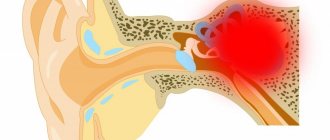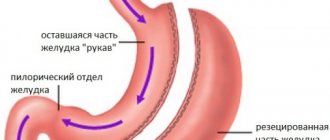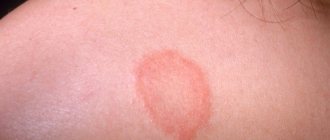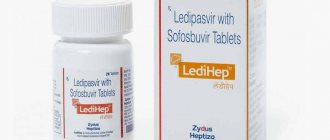What is vesicoureteral reflux?
Vesicoureteral reflux (VUR) is the return flow of urine from the bladder through the ureter into the kidney. Normally, urine moves unidirectionally from the kidney through the ureter to the bladder, and the return flow of urine is prevented by a valve formed by the vesical section of the ureter. When the bladder fills, the pressure in it increases, which leads to the closure of the valve. With reflux, the valve is damaged or weakened, causing urine to flow back toward the kidney. Approximately 20% of children with a urinary tract infection are diagnosed with vesicoureteral reflux.
Epidemiology
- 1According to voiding cystography, the frequency of pathology among newborns is less than 1%.
- 2PMR is 10 times more common in white and red-haired children compared to black children.
- 3 Among newborns, reflux is more often registered in boys; after 1 year, girls suffer from reflux 5-6 times more often than boys.
- 4The incidence decreases with increasing age of a person.
- 5 In children with urinary infection, the incidence of the disease is 30-70%.
- 6 In 17-37% of cases of prenatally diagnosed hydronephrosis, the development of pathology was influenced by the presence of reflux.
- 7 In 6% of patients with end-stage renal disease requiring dialysis or kidney transplantation, VUR is a complicating factor.
Why is vesicoureteral reflux dangerous in children?
In children, VUR is the most common cause of secondary renal shrinkage and impaired renal function. Reflux interferes with the removal of microflora that penetrates the urinary tract, leading to chronic inflammation of the kidneys (pyelonephritis). In addition, when urinating, the pressure in the renal pelvis increases sharply, causing damage to the kidney tissue. The outcome of chronic inflammation occurring against the background of impaired urine outflow is scarring of the kidney tissue with loss of kidney function (secondary kidney shrinkage, nephrosclerosis). Scarring of the kidney is often accompanied by persistent high blood pressure, which is difficult to respond to conservative therapy, which necessitates removal of the kidney.
What are the causes of PMR?
There are several main factors leading to dysfunction of the valve in the lower part of the ureter. Increased pressure in the bladder, together with insufficient fixation of the ureteric orifice, is accompanied by shortening of the valve section of the ureter and the occurrence of VUR. Chronic cystitis (inflammation) disrupts the elasticity of the tissues at the mouth of the ureter, contributing to the disruption of valve closure. A special place among the causes of VUR is occupied by congenital anomalies of the vesical ureter, including various variants of the anatomy of the ureterovesical junction.
Pathophysiology
Normally, the ureter enters the wall of the bladder at an acute angle, the ratio of the length of the intrawall portion of the ureter to its diameter is 5:1.
As the bubble fills, its walls stretch and thin. The intramural portion of the ureter is also stretched and compressed from the outside by the wall of the bladder, which creates a kind of valve that ensures normal unidirectional outflow of urine from the kidneys to the outside.
Anomalies in the structure of this section of the ureter lead to disturbances in the functioning of the valve mechanism (Table 2).
Against the background of reverse discharge, two types of urine can enter the pelvis: sterile or infected. It is the release of the latter that plays the main role in kidney damage.
The ingress of bacterial toxins activates the patient’s immune system, which promotes the formation of free oxygen radicals and the release of proteolytic enzymes by leukocytes.
Free oxygen radicals and proteolytic enzymes contribute to the development of an inflammatory reaction, fibrosis (overgrowth of connective tissue) and scarring of the renal parenchyma.
Reflux of sterile urine leads to the formation of kidney scars much later. Scarring of the parenchyma may be accompanied by the development of arterial hypertension due to activation of the renin-angiotensin system and chronic renal failure.
What are the clinical manifestations of VUR?
An attack of acute pyelonephritis is the first clinical manifestation of the presence of vesicoureteral reflux in most children. The disease begins with an increase in temperature above 38.0 without catarrhal symptoms. In urine tests, the number of leukocytes and the amount of protein increase. Blood tests also determine a high level of leukocytes and an increase in ESR. Children with acute pyelonephritis are referred for inpatient treatment, after which a urological examination is usually performed. Occasionally there are complaints of pain in the abdomen or in the lumbar region on the affected side. In newborns, suspicion of reflux most often arises when dilation of the pelvis (pyelectasia) is detected according to ultrasound.
Main symptoms
PMR can be suspected in the prenatal period, when transient dilation of the upper parts of the urinary system is detected during ultrasound.
In approximately 10% of newborns with this condition, the diagnosis is confirmed after birth. An important aspect is that the pathology cannot be diagnosed before the birth of the child.
- 1In general, the disease is not accompanied by any specific signs or symptoms, except in cases of a complicated course. Most often, the disease is asymptomatic until there is an infection.
- 2The clinical picture of a urinary infection is accompanied by the appearance of fever, weakness, lethargy, and indifference in the child.
- 3When the pathology is combined with serious developmental anomalies, the child may experience severe respiratory problems, growth retardation, renal failure, and urinary ascites (accumulation of urine in the abdominal cavity).
- 4 In older children, the symptoms are typical for a urinary infection: increased urination, urinary incontinence, lower back pain combined with fever.
How is the diagnosis made?
The main method for diagnosing PMR is voiding cystography: a 15-20% solution of a radiopaque substance is injected into the bladder through a catheter passed through the urethra until the urge to urinate appears. 2 x-rays are taken: the first - immediately after filling the bladder, the second - during urination. Based on cystography, PMR is divided into grades from 1 to 5 grades (Fig. 1). The criteria are the level of urine reflux and the severity of dilatation of the ureter. The mildest is the first degree, and the most severe is the 5th degree of reflux.
Refluxes detected by cystography are also divided into active (during urination) and passive (outside urination with low pressure in the bladder). In addition to detecting reflux and determining its degree, cystography provides important information about the patency of the urethra and suspects bladder dysfunction. Vesicoureteral reflux, which appears from time to time, is called transient.
Pediatric urology PEDUROLOGY.RU
Vesicoureteral reflux in children (VUR) is the backflow of urine from the bladder into the ureter and kidney. Reflux occurs in 1–2% of children, among children with pyelonephritis – in 25–40%, and is detected in 70% of cases under the age of 1 year, in 25% of cases – at the age of 1–3 years, in 15% of cases – in aged 4–12 years, at older ages - in 5% of cases. During the first year of life, the disease is detected much more often in boys than in girls; at older ages, the opposite ratio is observed.
VUR (vesicoureteral reflux) causes a violation of the outflow of urine from the upper urinary tract, which creates favorable conditions for the development of the inflammatory process (pyelonephritis), scarring of the renal parenchyma with the development of reflux nephropathy, arterial hypertension and chronic renal failure.
Causes of PMR.
The reverse (retrograde) flow of urine from the bladder into the ureter is a consequence of the failure of the valve mechanism of the ureterovesical (vesicoureteral) segment (UVS).
Primary VUR is distinguished, the cause of which is a congenital developmental anomaly - shortening of the intravesical section of the ureter. Primary reflux can be hereditary. As the child grows and develops, the structures that form the valve mechanism “mature”, and therefore spontaneous regression of reflux is possible. It has been noticed that the higher the degree of reflux, the less likely it is to disappear on its own. The incompetence of the valve mechanism of the UWS is noted by anomalies in the location of the ureteric orifice - dystopia, ectopia.
The causes of secondary VUR are increased intravesical pressure (posterior urethral valve, various types of bladder dysfunction), chronic cystitis. The chronic inflammatory process leads to sclerotic changes in the area of the ureterovesical segment, shortening of the intramural portion of the ureter and dehiscence of the orifice. In turn, chronic cystitis often occurs and is maintained by bladder outlet obstruction.
Damage to the renal parenchyma during PMR occurs both as a result of repetition (recurrence) of the infectious process and as a result of “hydrodynamic shock”. Abnormal lining of the ureter, leading to dystopia or ectopia of the orifice, entails the formation of a dysplastic kidney, which also affects its function.
Classification of PMR.
Vesicoureteral reflux is divided into passive, occurring during the filling phase, active, occurring at the time of urination, and passive-active or mixed. There is intermittent vesicoureteral reflux, which is not proven by X-ray methods, but has a characteristic clinical picture - recurrent pyelonephritis, periodic leukocyturia, indirect ultrasound and X-ray signs of vesicoureteral reflux.
The most common classification is that proposed by PEHeikkel and KVParkkulainen in 1966, adapted in 1985 by the International Reflux Study Group. Depending on the level of reflux of the contrast agent and the degree of dilation of the ureter and collecting system of the kidney, identified by retrograde cystography, 5 degrees of PMR are distinguished:
Rice. Vesicoureteral reflux degree
I degree – reverse reflux of urine from the bladder only into the distal ureter without its expansion;
II degree – reflux of urine into the ureter, pelvis and calyces, without dilatation and changes on the part of the fornix;
III degree – reverse reflux of urine into the ureter, pelvis and calyces with slight or moderate dilatation of the ureter and pelvis and a tendency to form a right angle with the fornixes;
IV degree – pronounced dilatation of the ureter, its tortuosity, dilatation of the pelvis and calyces, coarsening of the acute angle of the fornix while maintaining papillae in most calyces;
V degree – pronounced coarsening of the acute angle of the fornix and papillae, dilatation and tortuosity of the ureter.
A number of authors use the concept of “megaureter” when the diameter of the dilated ureter is more than 7 mm; in the presence of reflux, they speak of “refluxing megaureter”.
Clinical picture. Complaints, symptoms.
Vesicoureteral reflux in children does not have a specific clinical picture; the course of the disease in children, especially young children, is usually asymptomatic.
Complaints usually arise with manifestations of pyelonephritis. There is an increase in temperature to febrile levels, dyspeptic symptoms, abdominal pain, signs of intoxication, and cloudy urine. Older children complain of pain in the lumbar region after urination. In asymptomatic cases, the presence of reflux can be suspected during screening ultrasound examination of the kidneys (pre- and postnatally). An indication for a full range of urological examinations is the expansion of the pelvis (transverse size - more than 10 mm) and the ureter; an indirect sign of reflux during ultrasound is an increase in the expansion of the collecting system of the kidney and ureter as the bladder fills.
Diagnostics.
The main method for diagnosing vesicoureteral reflux in children is retrograde cystography.
The study should be performed no earlier than 1-3 weeks after the inflammatory process has stopped, because exposure to toxins on the ureter can distort the true picture of the condition of the ureters.
To determine the cause of VUR, assess kidney function and identify sclerotic changes in the renal parenchyma, it is necessary to conduct a comprehensive examination, including: ultrasound examination of the kidneys with Doppler assessment of indicators of intrarenal blood flow and ureterovesical emissions, study of urodynamics of the lower urinary tract (rhythm of spontaneous urination, cystometry or video cystometry , uroflowmetry), radiation methods are also used - intravenous excretory urography, dynamic radioisotope renography (technetium-99), static radioisotope renography.
Treatment.
The main goal of treating reflux in children is to prevent the development of reflux nephropathy, for which it is necessary to exclude two main damaging factors - “hydrodynamic shock” and recurrence of the infectious process. Treatment of secondary reflux should be aimed at eliminating the causes that caused it.
With a low degree of reflux, conservative measures are indicated, including:
– Correction of metabolic disorders in the neuromuscular structures of the ureter and bladder (Elkar, picamilon, hyperbaric oxygenation, physiotherapeutic procedures).
– Prevention and treatment of urinary tract infections (uroseptics, antibacterial therapy, immunocorrection, herbal medicine).
– Elimination of existing urodynamic disorders at the level of the lower urinary tract.
The lower the frequency of relapses of pyelonephritis, the lower the risk of developing reflux nephropathy, which justifies the use of antimicrobial drugs in patients with PMR.
After the course of treatment, 6–12 months. perform control cystography. The effectiveness of conservative treatment for grades I–III of vesicoureteral reflux is 60–70%, and in young children – up to 90%.
Indications for surgical treatment of reflux should be determined taking into account the age of the child and the cause of reflux.
Considering the possibility of spontaneous regression of reflux in children of the first year of life, it is necessary to adhere to the most conservative tactics. For high degrees of reflux, as well as an unadapted bladder, endoscopic correction of reflux is preferable. Surgical treatment should be resorted to only if an abnormal position of the ureteric orifice is detected (dystopia, ectopia).
In older children, the possibility of spontaneous resolution of reflux is much lower. For primary reflux, endoscopic or surgical correction is preferable.
Indications for surgical treatment of VUR are:
— Recurrence of urinary tract infection despite antimicrobial prophylaxis
— Presence of reflux after correction of bladder dysfunctions
— Ineffectiveness of conservative treatment (lack of growth or progression of kidney shrinkage, decreased kidney function)
— Reflux in combination with other developmental anomalies (duplication of the ureter, bladder diverticulum, etc.)
Endoscopic correction of reflux.
It is carried out by implanting a substance in the submucosal region of the ureteric orifice in order to strengthen the passive component of the valve mechanism. Among the advantages of the method are low invasiveness and the possibility of repeated manipulations in the area of the UVS. The disadvantages of the method are the impossibility of intraoperative assessment of the effectiveness of the created valve mechanism, migration or degradation of the injected drug over time, which may lead to the need for repeated manipulation. Various materials – auto- and heterologous – have been proposed as implantable substances. At present, there is no ideal substance for submucosal implantation; the most widely used substances are collagen, urodex, and vantris, each of which, in turn, has its own characteristics.
Rice. Vantrice, urodex
Surgical correction of reflux . Depending on the access, intravesical, extravesical and combined techniques are distinguished.
Photo: vesicoscopic (laparoscopic) operation.
The general principle of surgical correction is the creation of a valve mechanism for the ureterovesical anastomosis by forming a submucosal tunnel of sufficient length; the ratio between the diameter of the ureter and the length of the tunnel should be at least 1:5. The most common are the operations of Politano-Leadbetter, Cohen, Glenn-Anderson, Gilles-Vernay, Leach-Gregoire.
In the postoperative period, it is necessary to monitor the size of the kidney, collecting system and ureters, as well as antimicrobial prophylaxis. An X-ray examination to assess the effectiveness of the operation is carried out after 3–6 months.
For secondary reflux, treatment is aimed at eliminating the factors that provoke its occurrence.
If a posterior urethral valve is present, transurethral resection of the valve leaflets is performed, followed by drainage of the bladder through a urethral catheter and/or cystostomy. The decision on the need for further drainage is carried out after control urethroscopy after 10 days, subject to a reduction in the diameter of the ureters and the collecting system of the kidneys.
In the presence of dysfunction of the lower urinary tract, treatment is carried out depending on the type of disorders identified.
Forecast. Exodus.
With low degrees of reflux (I–III), the absence of pronounced changes in the renal parenchyma and relapses of pyelonephritis, a complete cure is possible without any consequences.
When areas of sclerosis form in the renal parenchyma, they speak of the development of reflux nephropathy.
Reflux of degrees IV–V in 50–90% is accompanied by congenital damage to the renal parenchyma associated with its dysplasia or secondary shrinkage.
According to recent studies, sterile reflux does not lead to the development of reflux nephropathy. When the infectious process recurs, the likelihood of developing kidney shrinkage increases exponentially. In children in the first year of life, the risk of developing kidney shrinkage is significantly higher than in older children.
All children with vesicoureteral reflux require dynamic monitoring by a urologist and nephrologist.
It is necessary to monitor a general urine test once every 2-3 weeks, a general blood test once every 3 months, a biochemical analysis of blood and urine (once every 6 months), an ultrasound examination of the kidneys once every 3-6 months, a radioisotope study of the kidneys once per year, cystography - after a course of therapeutic treatment, after 1 year to assess the regression of reflux. The need for antimicrobial prophylaxis in children with degrees I–III of reflux is decided depending on changes in general and microbiological urine analysis. In grades IV–V, antimicrobial prophylaxis should be carried out continuously.
CYSTOGRAPHY OR UROGRAPHY IN 1 DAY,
DIRECTION 057/U - FREE, SATURDAY AND SUNDAY.
REFLUX CORRECTION BY VMP - FREE OF CHARGE.
For many questions it is possible online
consultation with a urologist - https://www.pedurology.ru/konsultatsiya-on-lajn/konsultatsiya-urologa
consultation with a nephrologist - https://www.pedurology.ru/konsultatsiya-on-lajn/konsultatsiya-nefrologa
What other methods are used for examination?
Additional information about the condition of the urinary organs in children with VUR can be obtained by intravenous urography, bladder function testing (urodynamic study), cystoscopy and laboratory tests. Kidney function is determined based on radioisotope studies (nephroscintigraphy). As a result of these studies, refluxes are further divided into primary (pathology of the ureteric orifice) and secondary, caused by inflammation and increased pressure in the bladder.
How is endoscopy performed for PMR in a child?
Endoscopic surgery helps to cope with reflux in 97% of cases, especially if the safe and effective drug “Dam Plus” is chosen as an implant. A bulk-forming synthetic biopolymer in the form of a thick gel is implanted into the ureteral mucosa, which narrows the lumen and prevents the outflow of urine in the opposite direction.
A cystoscope is inserted into the urinary canal, through which the doctor gains access to the mouth of the ureter. Using a thin needle, a gel is directed there, which forms a dense “cushion” and provides a stable anti-reflux function.
"Dam Plus" has been used in modern medicine for more than 10 years
Endoscopic correction of the ureteral orifices using the drug "Dam Plus" in numbers: get acquainted with the research results and statistics on this innovative technology:
How is secondary reflux treated?
In case of secondary VUR, the diseases leading to its occurrence are treated (treatment of cystitis, bladder dysfunction, restoration of urethral patency). The probability of disappearance of secondary reflux after eliminating the cause ranges from 20 to 70%, depending on the disease. Less commonly, “self-healing” of secondary VUR occurs in congenital pathology. Often, even after eliminating the cause, secondary reflux persists, then treatment is carried out using surgical methods.
How is the reflux treatment method chosen?
With both surgical and endoscopic treatment, good treatment results can be obtained. However, in practice, treatment results in different clinics vary significantly. As a rule, the surgeon uses the method that he is better at and which allows him to obtain acceptable treatment results. In Russian healthcare, the choice of surgical method is determined by the guidelines adopted in a given institution. Nephrologists are less likely to refer patients for surgical treatment, observing children and providing antibacterial treatment and infection prevention. It should be noted that this approach is justified with low degrees of reflux and the absence of urinary tract infection.
Can primary VUR go away without surgery?
If primary reflux is not treated with surgical methods, then over the years it can disappear on its own in 10-50% of cases, however, during this time irreversible changes occur in the kidney. The higher the degree of reflux, the lower the likelihood of its self-healing. The disappearance of stage 1 reflux is most likely, therefore, with PMR stage 1. operations are usually not performed. Self-healing of grade 3-5 reflux is unlikely - therefore they are subject to surgical treatment. Reflux of the 2nd degree and transient reflux are operated on for recurrent pyelonephritis. The method of choice is endoscopic.
How long does the operation take in each case?
Direct endoscopic insertion of the DAM+ gel uro-implant takes very little time. The child is under anesthesia for 10-15 minutes, and can go home the next day. For open operations, the patient must spend about 10 days in the hospital. The operation lasts at least two hours. You are allowed to stand up only when all catheters have been removed. If the intervention was performed laparoscopically, you can get up on the second or third day after the pain disappears.
Endoscopic reflux correction takes only a few minutes
What are the benefits of endoscopic treatment?
The advantages of endoscopic operations for reflux are obvious: low trauma, short hospital period, minimal risk of complications. If high efficiency is achieved (at least 70-80% of permanent cure after the first procedure), then the advantages of endoscopic treatment are undeniable. At the same time, with low efficiency, the number of repeated interventions and anesthesia increases, which reduces the feasibility of using the method, so surgical treatment of reflux remains relevant. It should be noted that an incorrectly performed primary endoscopic procedure sharply reduces the effectiveness of treatment, since the orifice of the ureter is fixed in a disadvantageous position.
What determines the results of endoscopic treatment?
The method has many technical nuances, so the results of its application vary significantly. Cure after one endoscopic procedure ranges from 25 to 95%, and the final results of treatment in different hands range from 40 to 97%. More reliable results were obtained when using non-absorbable pastes - Teflon, Deflux, Dam+. The best results were observed with: primary procedures, low-grade reflux, the absence of gross anomalies of the ureteric orifice and bladder pathology.
Treatment Options
- 1Conservative treatment and active monitoring of the patient. The patient may be prescribed continuous or intermittent antibiotic prophylaxis. In a patient under 1 year of age, circumcision can also be performed (circumcision of the foreskin has been found to reduce the risk of urinary infection).
- 2Surgical treatment includes:
- Endoscopic injection of sclerosants into the tissues surrounding the orifice of the ureter (polytetrafluoroethylene, collagen, silicone, chondrocytes, hyaluronic acid).
- Open ureteral reimplantation.
- Laparoscopic ureteral reimplantation.










